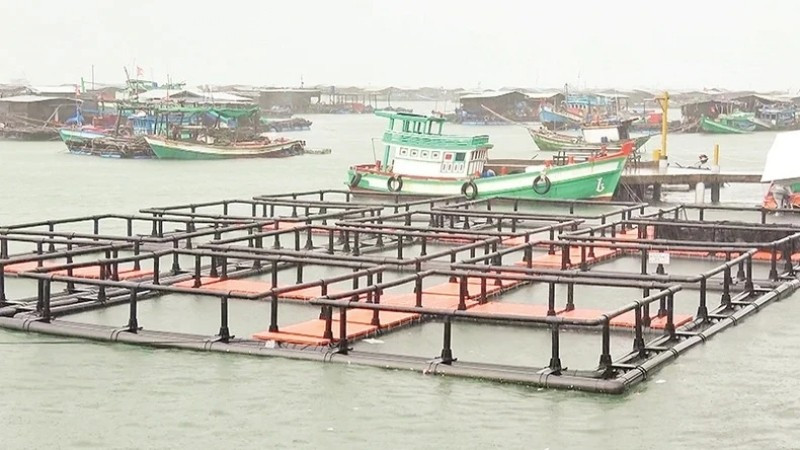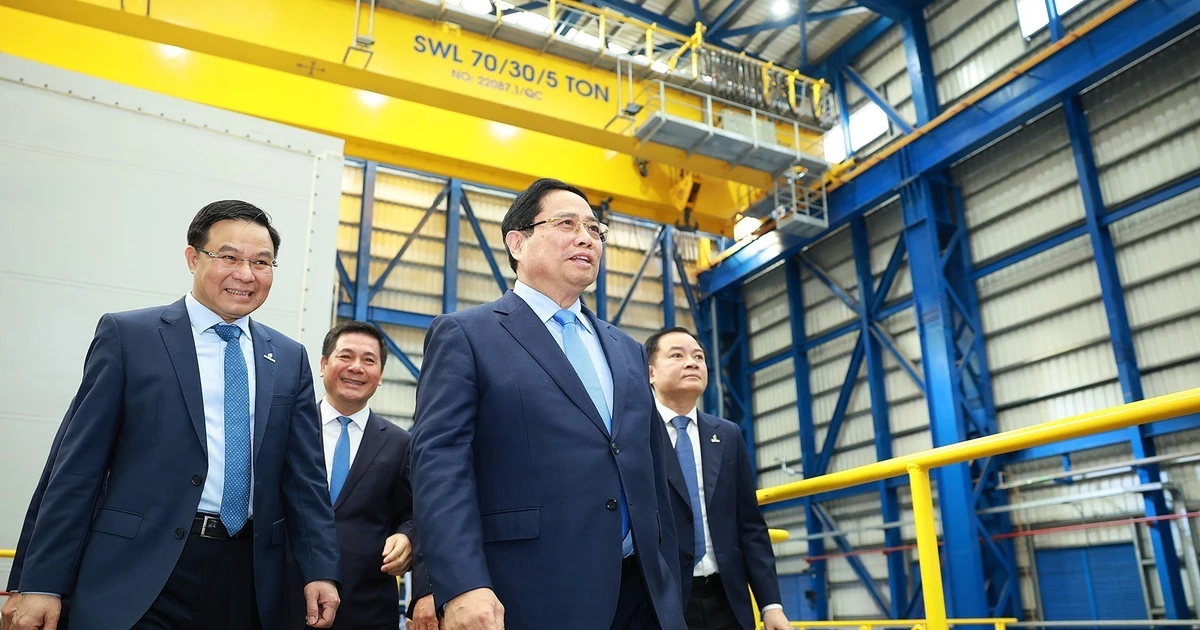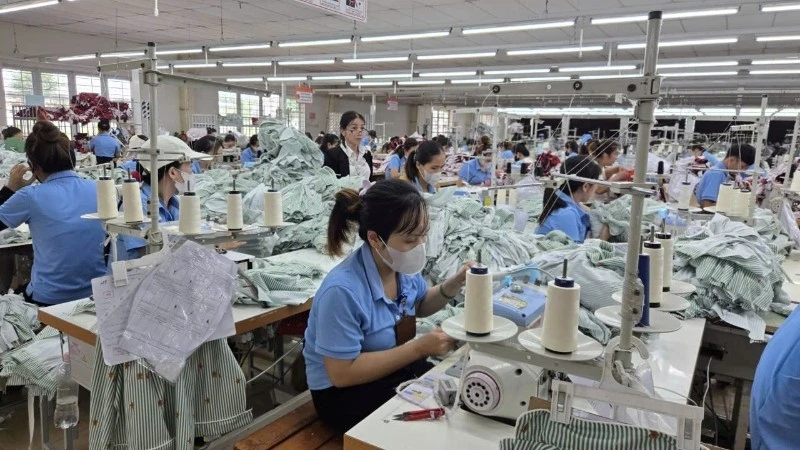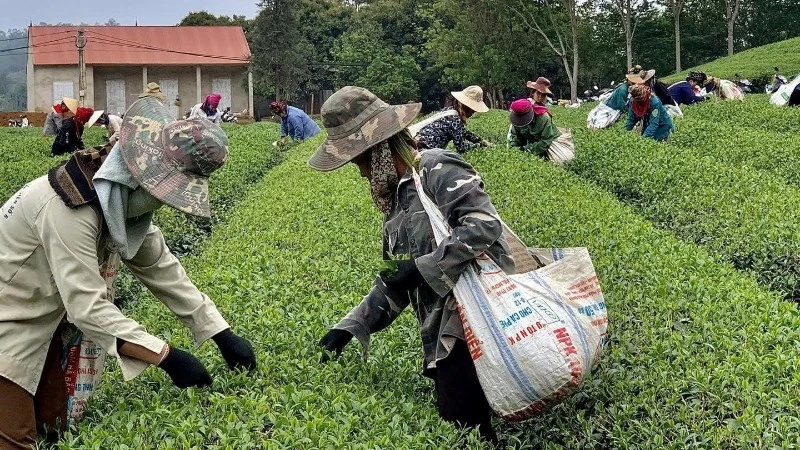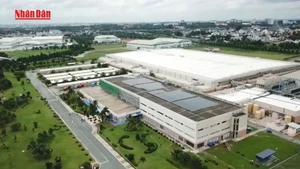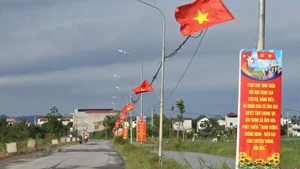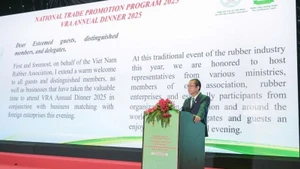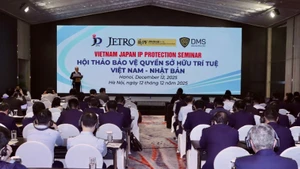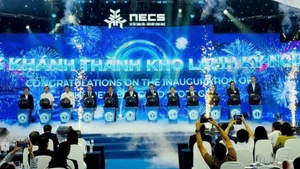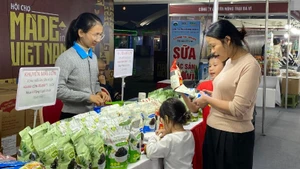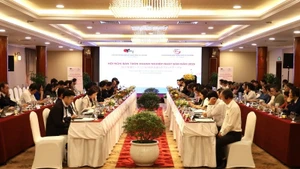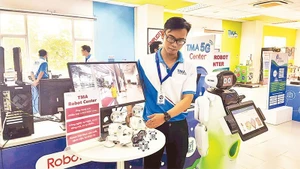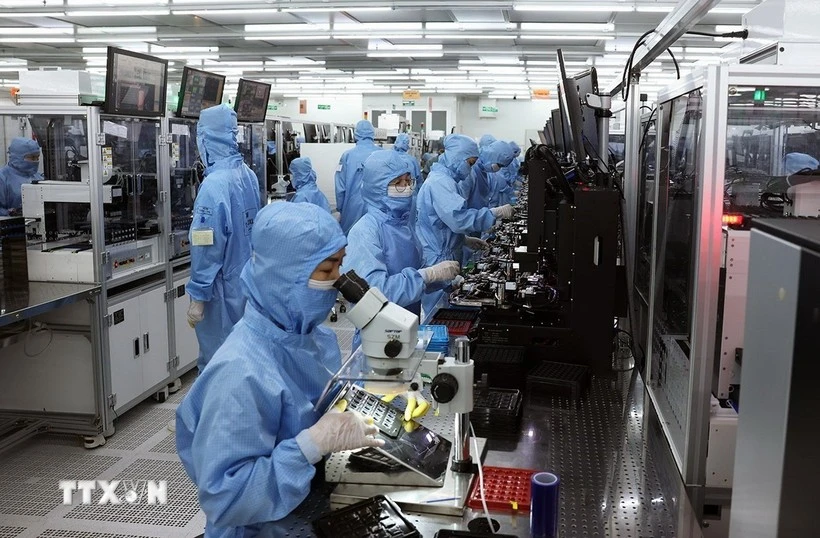Escaping poverty through marine farming
Phu Quoc City’s marine aquaculture development plan for the 2023-2025 period, with a vision towards 2030 aims to leverage existing potential and advantages to promote rapid development of marine farming towards industrial and modern approaches. The plan ensures harmony between economic growth and ecological environmental protection, linked with tourism development, national defence and maritime security; contributing to improving locals’ income and living standards.
In recent years, Phu Quoc has dedicated significant resources to transforming from natural fishing to sustainable aquaculture. Production volume has increased by an average of 11.2% annually, featuring many high economic value species such as cobia, grouper, pompano, red drum; various types of sea snails, pearls and other molluscs. Marine farming has not only opened a new direction but also improved the livelihoods of local residents.
Doan Thi Kim Phuong from Rach Vem Hamlet, Ganh Dau Commune - one of the first marine farmers in the area - shared: “Previously, my family would dive for fish, and many times when we caught small fish, we felt it was a waste, so we made our own cages to raise them. In 2003, I invested 60 million VND in a raft house for marine farming, received technical support from the Agricultural Extension Centre, and gradually developed to where we are today. Thanks to marine farming, my family’s finances improved, and since 2013, we’ve added services as well, making our income even more stable.”
Tran Quoc Trung, Director of the Ganh Dau Commune Aquaculture Agricultural Service Cooperative, also noted that previously cooperative members mainly raised commercial fish and were frequently subject to price pressure from middlemen, while investment costs remained high. Since combining marine farming with dining services on rafts, tours to Ham Rong beach, and other activities, income has noticeably increased. The cooperative, headquartered in Rach Vem Hamlet and established in 2018, now has nearly 70 members who own marine farming raft houses. Additionally, there are approximately 500 local workers employed in related services. The average income of cooperative members ranges from 350 to 500 million VND annually; labourers working at the raft houses also enjoy stable monthly incomes of 6 to 10 million VND.
Doan Van Sang, Head of Rach Vem Hamlet shared that the hamlet currently has 172 households with over 700 residents, most of whom make their living from raft houses. The model of combining marine farming with services has created jobs and income for locals, averaging 500-600,000 VND daily. Even those beyond working age can participate, which is why the hamlet no longer has any households classified as poor. For instance, Do Thi Sinh, now 67 years old, is among those who remain employed as kitchen assistants at raft houses despite being beyond working age. She receives accommodation and meals, with a steady monthly income of 6 to 7 million VND.
Seeking sustainable development for marine farming
In recent years, the model of combining marine farming and service in Phu Quoc has gradually received guidance and training on marine environmental protection. At the raft houses, waste and plastic are collected and transported ashore for treatment. However, most raft houses remain largely improvised, constructed with simple materials such as barrels, acacia wood and ordinary nets. Many households wish to invest properly and apply modern technology for sustainable development but remain hesitant due to various obstacles.
Tran Quoc Trung explained: “Currently, the authorities have not allocated specific water surface areas to farming households, so people are reluctant to make major investments. Previously, without planning, people mainly farmed spontaneously near the shore. When required to farm 600 to 750 metres from shore, everyone complied. Subsequently, the distance was increased to 1,000 metres, which residents also strived to implement, but now there is a policy to relocate to 1,200 metres offshore. The farther out, the greater the investment required, while constantly changing regulations create difficulties for members, as a properly invested raft house now costs 4 to 5 billion VND, which not everyone can afford.”
According to Phu Quoc City’s marine farming development plan for 2023-2025 and orientation towards 2030, the total planned marine farming area for the entire city reaches over 1,245 hectares. Ganh Dau Commune alone is planned for nearly 300 hectares, with an allocation standard of 1 hectare per household. However, as of now, the implementation of water surface allocation has not yet begun.
Ganh Dau Chairman Pham Huu Kiet stated: “To avoid future conflicts and difficulties in controlling the development of cages and rafts, which could affect maritime traffic, we propose temporarily allocating water surfaces first and completing the procedures afterwards. Only when people can farm stably according to state planning, will they feel confident to invest.”
Many households combining marine farming with services have also noted that if the upcoming water surface planning only allows for marine farming without services, many households likely won’t participate as the revenue wouldn’t provide the same economic value as the combined model. Residents have requested that authorities consider comprehensive planning for marine farming combined with services, as beyond providing economic benefits, this has become a tourism highlight. Rach Vem raft village has become a distinctive tourism feature of the island precisely because of this model.
Nguyen Huu Dung, Chairman of the Viet Nam Marine Farming Association, stated that alongside accelerating water surface allocation to enable stable investment by residents, the combined service model needs scientific planning to bring economic value to the locality and create resources for households and cooperatives to transition from traditional to sustainable industrial marine farming, improving efficiency and environmental protection.
In the long term, marine farming industrial zones need to be established, not simply switching from traditional materials to HDPE plastic cages. Additionally, there should be a focus on developing marine farming infrastructure for cooperatives and households to lease, which would then create an industrial-scale supply chain.
